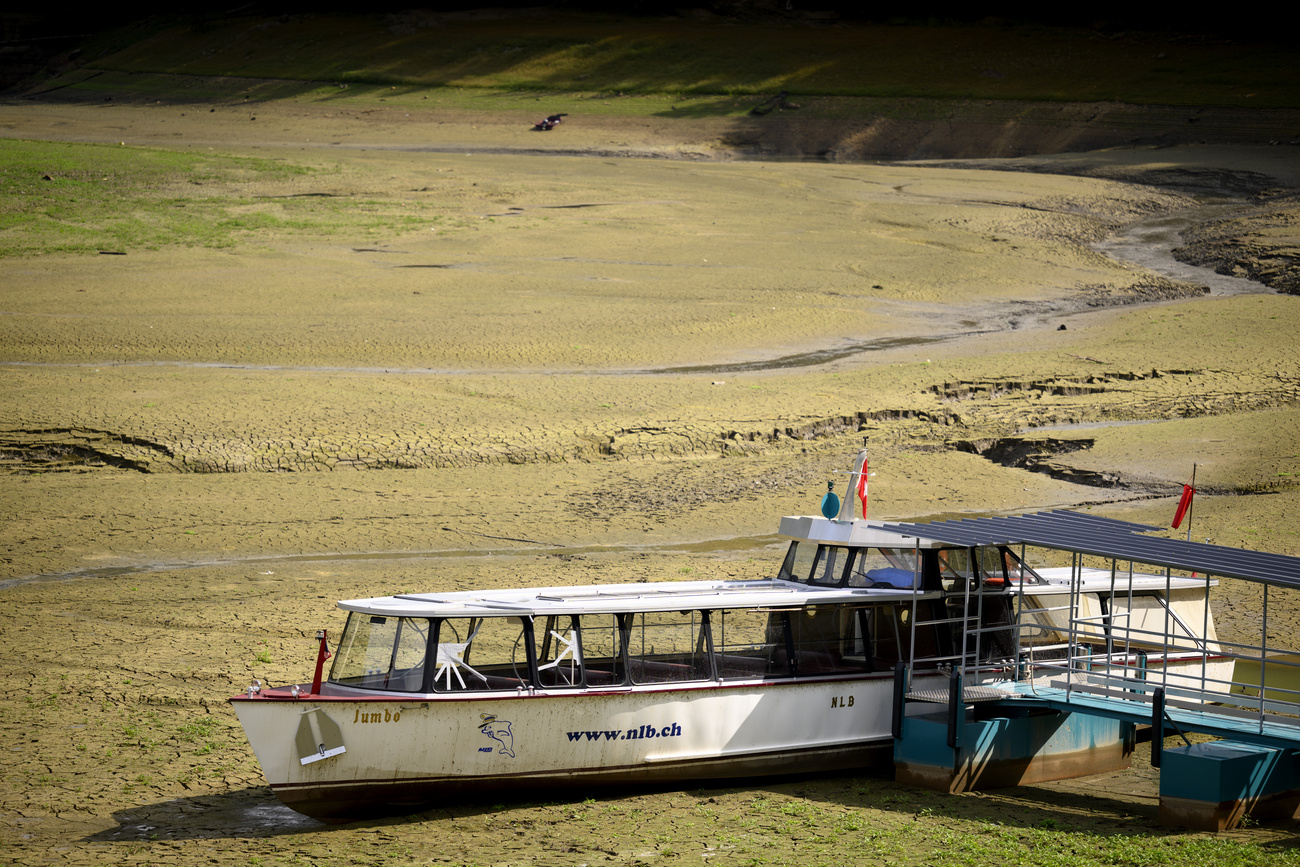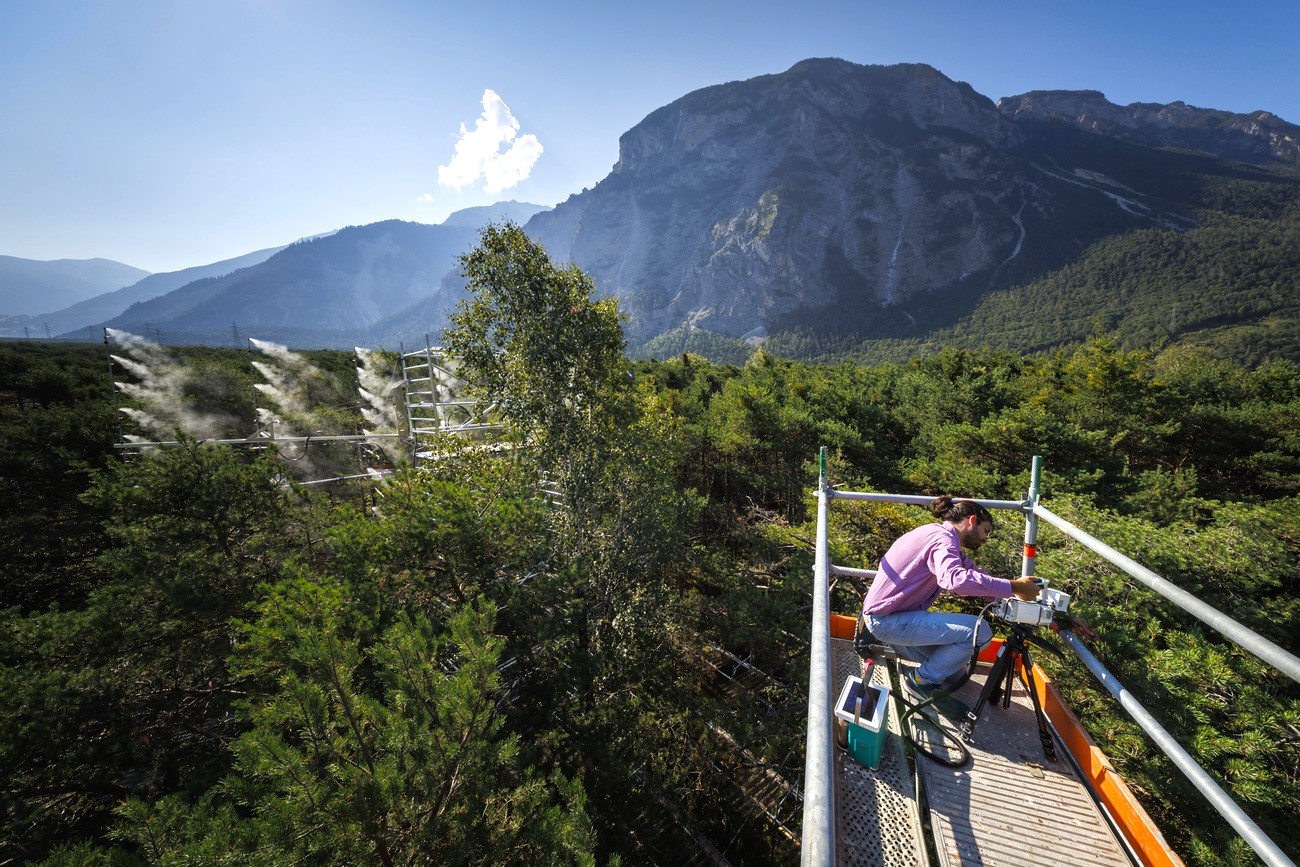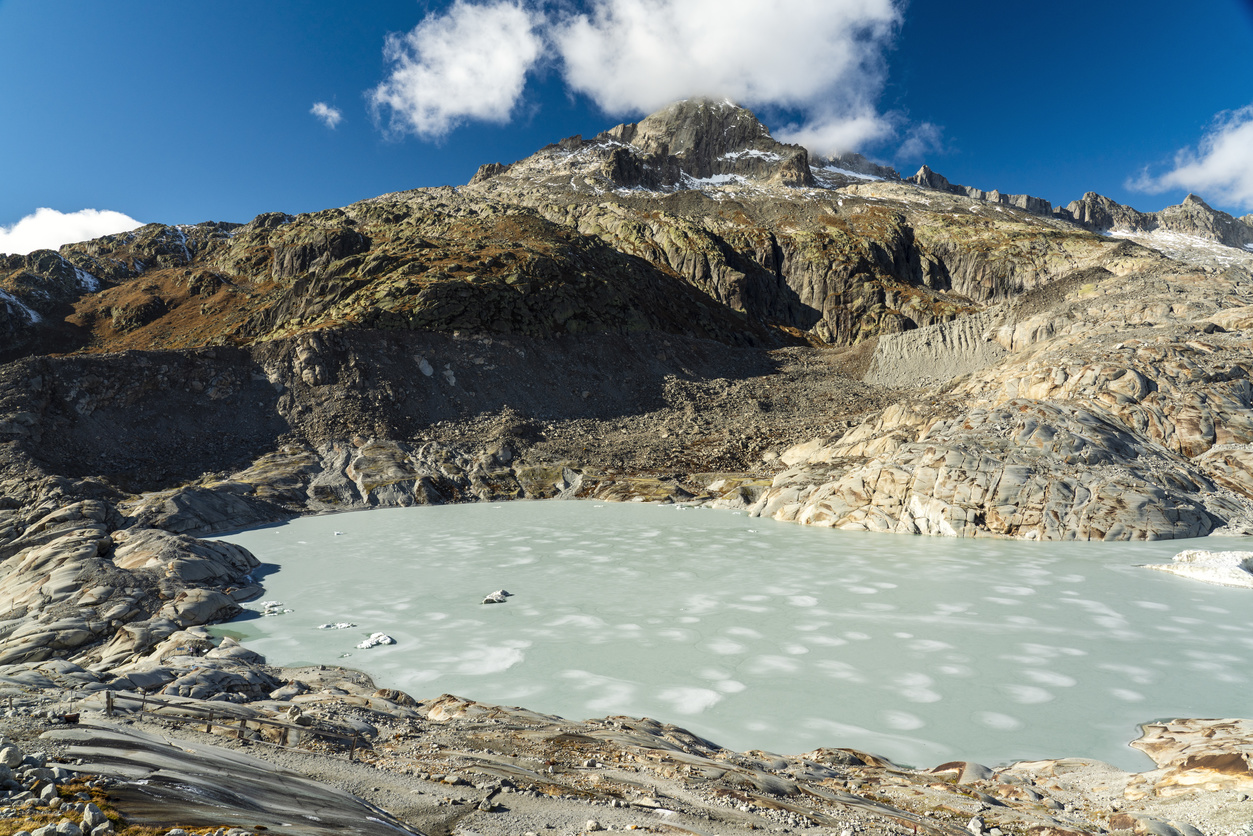
Neuchâtel and Zurich are as hot today as Italy 50 years ago

Data from European weather stations show current temperatures in Switzerland are similar to those found much further south a few decades ago, RTS reports.
Temperatures of 28°C in mid-September, a heatwave in June and new records for January: Switzerland is getting hotter and its climate is changing.
French-language Swiss public broadcaster, RTS, has comparedExternal link historical monthly temperatures of over 900 weather stations in Europe – and the results are striking.
In most stations, temperatures are currently getting closer to what was recorded in the 20th century at places further south. For example, Geneva is similar to northern Italy, Paris to Toulouse and London to the region around Bordeaux in France.
How have temperatures changed near you? Click on a station:
The selected station is shown in red, while stations with similar temperatures in the 20th century appear in blue. Note: On iOS devices (iPhone and iPad), you need to click twice on a station to select it.
Climate change
For Martine Rebetez – a University of Neuchâtel professor and a researcher at the Swiss Federal Institute for Forest, Snow and Landscape Research (WSL) – these temperature trends are undoubtedly part of the already noticeable effects of climate change. This is a logical conclusion, given that current average temperatures in Switzerland are almost three degrees higher than pre-industrial levels.
Faced with the speed of warming, flora is struggling to adapt. “Spruce trees have a lifespan of over 100 years. Temperatures are changing too quickly, which means that during their lifetime they will suffer, and their health will deteriorate,” says Rebetez. These trees could eventually become rare in Switzerland.
Read more in our article below about how forests are affected by drought:

More
Swiss experiment targets forest drought, a driver of climate change
Potatoes and sugar beet in danger
Agriculture is also gradually having to adapt to the new temperatures. In Switzerland, potatoes and sugar beet, which thrive in a cold, damp climate, have a hard time when the thermometer climbs above 30°C. These two root vegetables could benefit from being grown at cooler altitudes, but the majority of farmland is on the plains. Their historic presence in Swiss fields is under threat.
Unlike plants, animals can move to a more favourable environment, but their arrival can then threaten the ecosystem. Such risks are already clear from the example of the tiger mosquito – an invasive insect carrying serious diseases, which has set up camp in southern Europe and even in Switzerland.
How do rising temperatures in Switzerland compare globally? Read more below:

More
Why Switzerland is among the ten fastest-warming countries in the world
Different climate, similar temperatures
But while average temperatures are becoming similar to those in places further south, the climate remains different, particularly in terms of rainfall and temperature variations. “Mediterranean regions have relatively uniform hot, dry summers,” Rebetez explains. “On the other hand, in places like Switzerland, very hot periods can be followed by cold, rainy spells”.
Before scrubland comes to the Jura region and olive oil is produced in Aargau, countries both northern and southern face many environmental challenges posed by global warming.
Translated from French by DeepL/dos

In compliance with the JTI standards
More: SWI swissinfo.ch certified by the Journalism Trust Initiative






























You can find an overview of ongoing debates with our journalists here . Please join us!
If you want to start a conversation about a topic raised in this article or want to report factual errors, email us at english@swissinfo.ch.